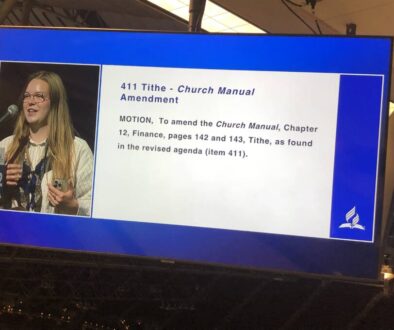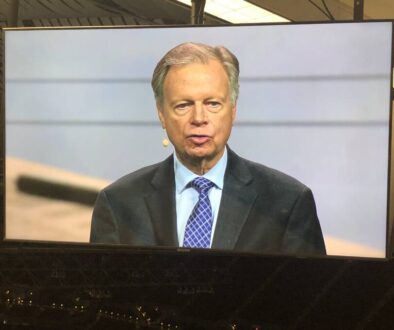Urban Mission Focus, Changes in Tithe Sharing Addressed at Spring Governance Meeting
by AT News Team
At the spring 2012 meeting of the top governing body in the Seventh-day Adventist Church plans were reviewed for focusing the outreach activities of the denomination on urban areas and the first step taken in balancing the sharing of tithe income around the world. The General Conference executive committee met this week in Silver Spring, Maryland, and the agenda was primarily about financial and strategic planning as is usual.
The committee voted to direct the GC treasurer to prepare the budget for 2013 with the assumption that the percentage of tithe shared with the GC by the North American Division will be reduced. The actual policy change will be on the agenda for the Annual Council of the committee in October. A study group will continue to review the possibility that the percentage of tithe from other world divisions will be increased.
Church members around the world are taught to give ten percent of their income to a Tithe Fund which is administered by local conferences. The denomination’s Working Policy dictates how this fund is divided up and currently in North America eight cents out of each dollar donated goes to the General Conference, while in the rest of the world it is only two cents out of each dollar. The proposal is to change these figures to six cents and three cents.
The reason for the imbalance has to do with history and economics. Historically, the Adventist movement began in the United States and the churches here took the initiative in planting missions in the rest of the world. Various percentages of the tithe have been devoted to these international efforts over the past 150 years and the results have been spectacular. The number of Adventist adherents has grown from a few hundred in the mid-19th century to perhaps 30 million today, generally recognized by scholars as one of the fastest-growing new religions on the globe. The growth has slowed in North America as it has accelerated in some parts of the world, and church leaders now see the need to invest a larger share of resources here.
It is also true that in recent months tension has surfaced between denominational governing bodies in North America and the GC officers over the topic of whether to ordain women serving in pastoral ministry. GC president Pastor Ted Wilson went out of his way to express appreciation to the North American Division during the discussion of the proposed changes in tithe-sharing percentages. “Let me underscore the appreciation on the part of the world field and the General Conference for the generosity on the part of the North American Division for decades,” the official Adventist News Network (ANN) quoted Wilson. “We do value it and appreciate it.”
If the new policy is confirmed at the October meeting the new policy will be phased in over a period of eight years from 2013 through 2020, reported the NAD in its weekly Email newsletter. The portion of the tithe coming from the NAD has dropped from 69 percent in 1985 to 44 percent in 2010. This reflects the growing portion of the membership in the rest of the world as well as the growing economic strength of Adventists outside of North America because the actual dollars contributed in North America has also continued to grow.
The review of urban mission plans included the announcement of 24 major cities where initial projects will be launched in 2013 and 2014. These include New York City, which is designated to provide the first model for the new approach, Kinshasa, Kiev, Moscow, Prague, Geneva, Hamburg, Munich, Vienna, Mexico City, Caracas, Bogota, Tokyo, Buenos Aires, Luanda, Sydney, Christchurch, Manila, Mumbai, London and Lagos. In addition to conventional evangelism, the new strategy calls for “centers of influence” which meet social needs and “Global Mission Pioneers,” volunteers who start new groups of Adventist believers, “help meet physical and spiritual needs, speak the local language and live and work in their own culture.”
ANN also reported that changes were made in the work of the General Conference Auditing Service (GCAS), the internal auditing organization of the denomination. Some audit work will be shifted to local, outside firms and denominational entities outside North America will begin to pay for audits as the NAD currently does.



